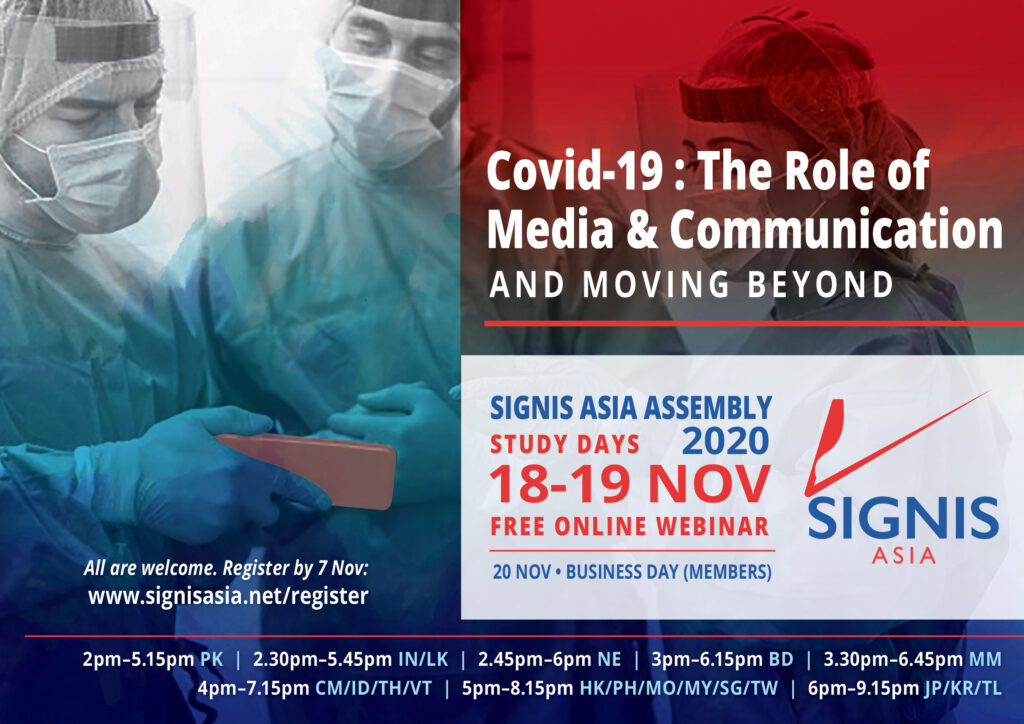“Covid-19: The Role of Media & Communication and Moving Beyond”.

The COVID-19 Pandemic The world today is facing the widespread spread of COVID-19. This pandemic puts intense pressure on health, economic and social structures. The need of the moment is the proper implementation of effective approaches to public health and strong leadership by the governing bodies of each nation. Lack of awareness, knowledge and preparation would put people and health personnel at risk during this crisis. The dilemma is how to transmit the knowledge of current statistics on diseases and their prevention to the general population at a rate equivalent to or better than the spread of the virus. Misinformation Unfortunately, a great deal of health-threatening misinformation is spreading at a faster rate than the disease itself. Most of this false rumor is spread through social media. Providing fast, accurate and reliable information that addresses critical infection control issues is crucial at this juncture. Unfortunately, this was not well done by various institutions. The role of social media was not well used to close the information gap. The lack of communication and the lack of necessary communication has made the situation worse. Dr. Tedros Adhanom, Director General of the World Health Organization (WHO), calls this a battle against "trolls and conspiracy theories." Misinformation creates confusion and spreads fear, making it difficult to respond to the outbreak. The government and health professionals must adopt and plan for the use of social media, work together, set limits and build guidelines for its use and, above all, make it work for the general population. Effective communication Effective communication between citizens and public health authorities and / or governments through the media and social media platforms are among the essential components of successful responses to a pandemic. keep people safe and aware of the facts related to the coronavirus and cover two billion people. People can also stay in contact directly with WHO. The immediate development of a communications plan with toolkits is required to contribute to the needs of public health response to future global outbreaks. Hazard communication Hazard communication is also now part of the regional emergency response preparedness program for health emergencies. Strengthening risk communication capacity is an essential component of global efforts to improve global health security. Since the announcement of COVID-19 as a pandemic, the media and social media have been inundated with information. Some of the information is aimed at educating people about the new virus, and other misinformation creates fear, anger, and panic among people. Government bodies, public health authorities, religious institutions and NGOs should use the media to raise awareness.
Objectives of the webinar:
Understand the impact of COVID-19 on Asia's socio-economic and political spheres and plan strategies to support the poor and vulnerable sectors of society.
Analyze the role of the media in containing the spread of COVID-19.
Gain knowledge of our interventions as a communication organization, Church institution and as individuals to contain the spread of COVID-19 and rehabilitation activities.
Explore the possibilities of turning COVID-19 challenges into opportunities.
Register to attend the SIGNIS Asia Assembly (SAA) 2020 free online on the theme “Covid-19: The Role of Media and Communication and the Future”. Due to the Covid-19 pandemic, this year's SAA2020 will be held in line with Study Day webinars on November 18 and 19. The SIGNIS member business day will be held on November 20. The duration of the Study Days and the Business Day will be 3 hours and 15 minutes each day. Experienced people from all over Asia will share and debate on a variety of topics. The login link and the program schedule will be sent to your email closer to the date. Click to register: SAA2020 REGISTRATION FORM
Asia Login Times: 2:00 PM to 5:15 PM
, PAKISTAN 2:30 pm to 5:45 pm INDIA /
SRI LANKA 14:45 to 18:00
NEPAL 15:00 to 18:15,
BANGLADESH 15: 30-18: 45
MYAMNAR 4:00 p.m. to 7:15 p.m. CAMBODIA / INDONESIA / THAILAND / VIETNAM 5:00 p.m. to 8:15 p.m.
HONG KONG / PHILIPPINES / MACAO / MALAYSIA / SINGAPORE / TAIWAN 6:00 p.m. M. At 21:15 p. M.
JAPAN / KOREA / TIMOR LESTE Please note the time differences for other countries not mentioned. For more information contact: SA Secretary: Bernadetta Widiandayani (Widi) - widiandayani@yahoo.com | +62 815686 5964 SA Study Day Coordinator: Magimai Pragasam - magimai2005@gmail.com | +91 94 441 32111 Other inquiries: signisasia.region@gmail.com Keep reading






